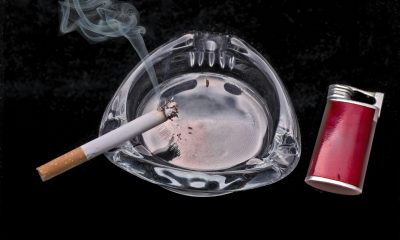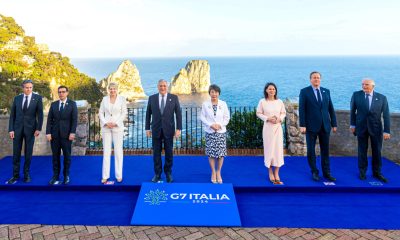EU
#EAPM - ENVI-komitee van die Europese Parlement gee 'n positiewe behandeling aan die voorstel van die Commissie # MTV - maar wat volgende?

 It has taken 20 years to get here, but European citizens now stand on the threshold of benefiting from better – and more efficient – health care. On 13 September in Strasbourg, the European Parliament’s Environment, Public Health and Food Safety committee (ENVI) voted to adopt a series of compromises, thrashed out in the past months and weeks, in respect of the European Commission’s proposal on joint action on health technology assessment, or HTA, skryf Europese Alliansie vir Persoonlike Geneeskunde (EAPM) Uitvoerende Direkteur Denis Horgan.
It has taken 20 years to get here, but European citizens now stand on the threshold of benefiting from better – and more efficient – health care. On 13 September in Strasbourg, the European Parliament’s Environment, Public Health and Food Safety committee (ENVI) voted to adopt a series of compromises, thrashed out in the past months and weeks, in respect of the European Commission’s proposal on joint action on health technology assessment, or HTA, skryf Europese Alliansie vir Persoonlike Geneeskunde (EAPM) Uitvoerende Direkteur Denis Horgan.
This was a fix to the current failings in the way EU countries assess new health technology. And this proposed fix aims to support bringing innovative care faster to patients, and protect health budgets by eliminating waste.
Of course, every member state wants to do the best it can for its citizens, but defects in the current systems for assessing new health technologies have left citizens across the EU suffering from an innovation gap in health care. And as long as each member state makes its own individual assessment of these technologies, that gap will not be easily closed.
The proposal was required due to the major changes that have occurred in healthcare in recent years and the new emphasis on cost. For decades, health-care spending has risen steadily in the developed world, in line with the growing prosperity that permitted many countries to continue funding wider coverage of the new diagnostic and treatment regimes that medical science offered.
But three factors have radically modified that equation in the last ten years, giving new prominence to assessing the value of treatment.
The most obvious new factor is the ageing of the population which has dramatically increased the burden on health and social security spending. The second factor is the slowdown in economies in much of the developed world – and particularly in Europe. The third factor is the tsunami of scientific, technological and medical progress in the current millennium.
So on the threshold of the European Parliament elections in May 2019, its appointed leaders, faced with numerous new and valuable but often costly, diagnostic and therapeutic options, are recognizing that new treatments are worth a lot, but are inevitably posing the question of just how much they are worth.
The entire HTA exercise is at a crucial tipping point in Europe. Over the last decade or so the EU has sought to develop HTA co-ordination and support mechanisms together with member states through the establishment, in 2006, of the EUnetHTA.
But with more than 50 HTA national and regional agencies in the member states, there is high fragmentation leading to duplication of efforts, lack of standardization and coordination.
While joint work at EU level has been carried out, and its added value has been recognised, the uptake at national level has been variable. Controversy surrounds the EU Executive’s plans to make joint action mandatory and, while several member states (notably France and Germany) feel that the Commission has overstepped its competence, the Legal Affairs Committee backed its plans as lawful under the Treaties.
In the end, there more than 60 compromise amendments which the European Alliance for Personalised Medicine (EAPM) was actively engaged with as well as meeting with MEPs and the Alliance’s broad membership. A compromise on accurate evaluation of new health technologies itself going to depend on a number of factors. These are issues that we have conveyed.
One is information – and information that is accepted and is trusted. Another is an agreed system of criteria for analysing the information and assessing the options – trusted by all stakeholders. The corollary is that no solutions can be found, no response to the challenge will be satisfactory, without trust – trust in the information, and trust in the systems.
What sort of mechanisms can make it easier to establish that trust? Part of that has to be a better understanding from the outset of where each of the distinct stakeholders is coming from. Hence, EAPM has had, and will have, a series of meetings with its members to discuss these.
No one simple answer is going to work. Private enterprise innovators may want maximum returns, but that flies in the face of what healthcare systems (and those who pay for them) want – which is the most economical way of providing healthcare for all, and therefore requires tough choices and tight budgeting; and that may in turn clash with the desires of many in the general public, who favour access to every innovation that may do them good, irrespective of the price; and who may even, in extremis, clash with regulators' desire for dependable safety when caution may delay or prevent access to a promising innovation.
So everyone is going to have to make some compromises, hence, we had the 60 amendments. The Commission committed in its communication “Upgrading the Single Market: more opportunities for people and business” to introduce an initiative on HTA with a view to improving the functioning of the Single Market of health technologies, in particular in order to avoid duplication of efforts for Member States and industry.
As ever, there have been creases to iron out, but almost all of the compromises discussed under rapporteur Spanish Socialist and Democrat MEP Soledad Cabezón Ruiz’s watch were adopted. However, despite what occurs at plenary on 1 October, it may be more of a struggle to reach accord in Council.
Cabezón Ruiz said: “There is clearly an added value for patients and for public health systems in establishing an EU-wide system. Health is a fundamental right, and we must do our outmost not to let the market logic prevail, so we ask the Commission to propose a regulation on Health Technologies Assessment.
“In the last decade,” she added, “the price of anti-cancer drugs has increased by up to 10 times more than their effectiveness as treatments….studies show that based on an average of five years’ monitoring, only 14-15% of the drugs improve survival rates.
“In addition, a very high percentage of new medicinal products brought onto the European market offer no advantage over existing products”. “The need for more evidence on medical devices led 20 member states and Norway to introduce clinical assessment schemes, adopt guidelines and carry out public consultation procedures at an early stage. It is a shame that the EU is lagging behind,” she said.
As stated, since the launch of the proposal in January and the subsequent EAPM meetings, the issue of more EU-wide co-operation in HTA has seen continuous engagement on the topic between the EAPM and Members of the European Parliament.
Dit sal voortgaan om vorentoe te beweeg. Inderdaad sal EAPM 'n vergadering in Brussel op 26 September aanbied om in besonderhede veranderings en kompromieë aan die voorstel te bespreek. Intussen is die Bondgenootskap aktief betrokke by lidlande se gesondheidsministers sowel as Europese politici.
Deel hierdie artikel:
-

 Tabak4 dae gelede
Tabak4 dae geledeWaarom die EU-beleid oor tabakbeheer nie werk nie
-

 China-EU5 dae gelede
China-EU5 dae geledeVat hande om 'n gemeenskap van gedeelde toekoms te bou en 'n beter toekoms vir China-België te skep Allround vennootskap van vriendelike samewerking saam
-

 Europese Kommissie5 dae gelede
Europese Kommissie5 dae geledeNie heeltemal vrye beweging aan die VK aangebied vir studente en jong werkers nie
-

 middel ooste4 dae gelede
middel ooste4 dae geledeEU-reaksie op Israel se missielaanval op Iran kom met waarskuwing op Gasa























